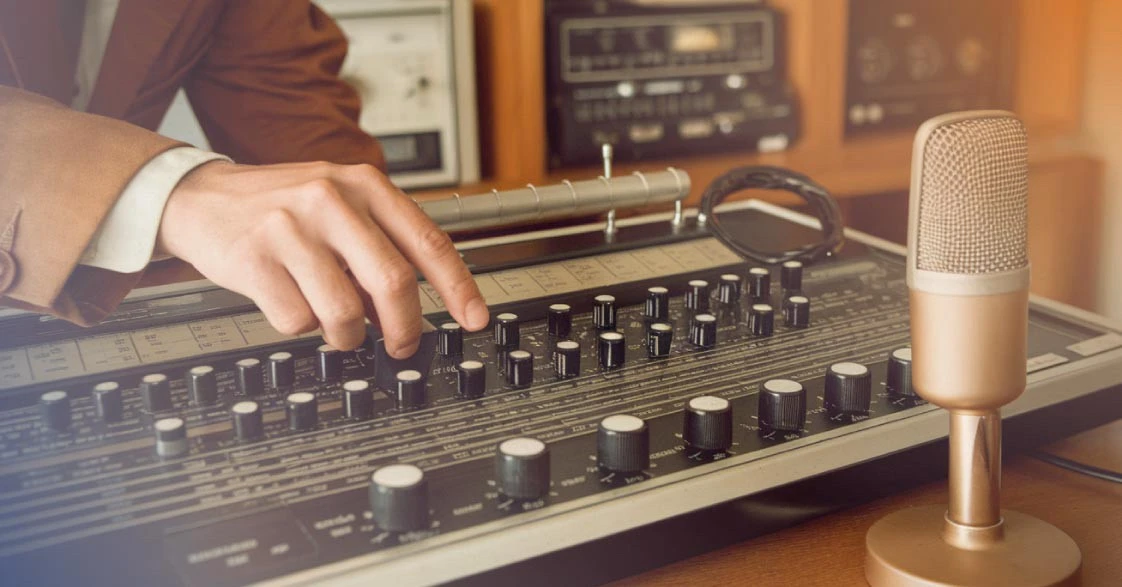
Some might wonder if traditional mediums like radio advertising still hold value. The truth is that radio remains a powerful and effective platform for businesses to reach targeted audiences. With its broad reach, affordability, and ability to connect with listeners personally, radio advertising continues to thrive as a marketing tool.
This blog explores the fundamentals of radio advertising, its advantages, strategies for success, and what the future holds for this timeless medium.
What is Radio Advertising?
Radio advertising involves broadcasting promotional messages or campaigns on radio stations to reach a specific audience. Advertisers can target their message to a particular demographic, region, or interest group by selecting the right station and time slot.
Why is Radio Advertising Effective?
- Broad Reach: Radio reaches millions of listeners daily, making it ideal for mass communication.
- Cost-Effective: Radio advertising is often more affordable than TV or digital ads.
- Targeted Messaging: Advertisers can choose specific stations or programs to target niche audiences.
- Engagement: Radio often serves as a companion, making its messaging more personal and engaging.
- Immediate Impact: Radio ads can be produced and aired quickly, making them perfect for time-sensitive promotions.
Crafting Compelling Radio Ads
Creating a memorable and effective radio ad requires creativity, precision, and audience understanding. Here are the key elements of a great radio advertisement:
1. Understand Your Audience
Before crafting your ad, identify your target audience. Consider their age, interests, location, and preferences. For example, a car dealership may advertise during a morning news program to reach commuters.
2. Keep It Short and Simple
Most radio ads last 30 to 60 seconds, so keeping the message concise and impactful is essential. Focus on one main idea or call to action.
3. Use a Strong Hook
Grab the listener's attention in the first few seconds. A catchy jingle, intriguing question, or relatable scenario can make all the difference.
Example: "Tired of sitting in traffic every day? Let ABC Motors help you escape the grind with our fuel-efficient cars!"
4. Create Emotional Connections
Radio is a storytelling medium. Use relatable scenarios, humour, or emotions to connect with listeners personally.
5. Include a Clear Call-to-Action
Always tell listeners what you want them to do next. Whether visiting your website, calling a number, or attending an event, make the action clear and easy to follow.
Example of a Well-Crafted Radio Ad:
“Ready to spice up your dinner routine? Try Spicy Delights! Visit us today for a taste of India right in your neighbourhood. Call 555-123-456 or visit spicydelights.com for our full menu!”
Radio Advertising for Local Businesses
Local businesses often find radio advertising a cost-effective way to connect with their community. Here's why radio works particularly well for small and medium-sized enterprises (SMEs):
- Localized Reach: Local radio stations target specific geographic areas, allowing businesses to focus on their immediate market.
- Affordable Options: Radio ads are more budget-friendly than TV or print ads, offering smaller businesses a competitive edge.
- Community Connection: Many local stations have loyal listeners who trust their programming, creating a sense of familiarity and credibility for advertisers.
- Flexible Scheduling: Businesses can choose peak hours to run ads, such as morning or evening commute times.
Example for Local Businesses:
A family-owned restaurant might advertise weekend specials on a popular morning talk show, reaching listeners who are planning their day.
Measuring the Effectiveness of Radio Ads
One of the challenges of radio advertising is tracking its success. However, there are several ways to measure the effectiveness of your campaign:
1. Monitor Website Traffic
If your ad directs listeners to your website, utilise tools like Google Analytics to track traffic spikes during and after the ad airs.
2. Track Promo Codes or Offers
Including a unique promo code in your ad allows you to measure conversions directly linked to the campaign.
Example: "Use code RADIO20 for 20% off your first order!"
3. Listener Surveys
Ask customers how they heard about your business. This simple approach can provide valuable insights into your ad's reach.
4. Sales Data
Compare your sales data before, during, and after the ad campaign to identify noticeable increases.
5. Call Tracking
If your ad includes a phone number, use call-tracking software to monitor the number of inquiries generated by the campaign.
The Future of Radio Advertising
While digital platforms dominate modern marketing, radio continues to evolve and stay relevant:
1. Integration with Digital Platforms
Radio is now often consumed online via streaming services and mobile apps. Advertisers can leverage these platforms to reach even larger audiences.
2. Programmatic Advertising
AI and programmatic tools allow advertisers to buy and optimize radio ad slots more efficiently, targeting the right audience at the right time.
3. Podcasts and Audio Streaming
The rise of podcasts and audio streaming platforms like Spotify presents new opportunities for advertisers to reach niche audiences with tailored ads.
4. Personalization
Advancements in data analytics enable personalized radio ads based on listener preferences, location, and behaviour.
5. Hybrid Campaigns
Brands increasingly combine traditional radio ads with digital elements like social media campaigns or QR codes, creating a seamless experience across platforms.
Final Words
Radio advertising remains a powerful, timeless medium that continues to adapt to the changing marketing landscape. With its ability to connect emotionally, reach diverse audiences, and provide localized targeting, radio offers significant value to businesses of all sizes. By crafting compelling ads, leveraging local stations, and integrating new technologies, brands can maximize the impact of their radio advertising campaigns.
Whether you're a local business looking to connect with your community or a national brand pursuing mass reach, radio advertising can deliver resonating results. Ready to tune in and elevate your marketing strategy? Start exploring the endless possibilities of radio today!

FAQs
Share
Table Of Contents
- What is Radio Advertising?
- Crafting Compelling Radio Ads
- Example of a Well-Crafted Radio Ad
- Final Words
